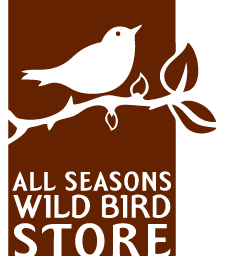

Identification
Perhaps one of the most beloved songbirds, what backyard birder hasn’t been thrilled by the sight (photographed at right by Carol Papermaster) of dozens of finches hanging on Nyjer® feeders?
In the summer, the male goldfinch is a bright yellow with a black forehead and wings with white wing bars. The female lacks the black forehead and has a duller olive-yellow color. During the fall, both the males and females molt their bright yellow feathers for ones of a drabber, tan color. But, by early February close observers will note the first hints of yellow starting to show through, a sure sign that spring will eventually arrive. Of interest, goldfinches are one of the only finches who complete two molts a year: one in spring and one in the fall.


Pictured: Female goldfinch and winter goldfinches
Nesting
American Goldfinches begin raising their broods much later than other songbirds, oftentimes not raising a family until mid-July. Many suggestions have been made as to why, with nesting materials and seed availability for the young leading the theory pack. Goldfinches rely on the soft, white down from wild thistles to line their nests, and Nyjer® seed (or thistle) is their food of choice, although they will add insects every now and then. With thistles not blooming until late June, seeds and down don’t make an appearance until well into July.
Attracting
The goldfinch is found throughout North America, including well into northern Canada and southern Mexico. Even in cold climates, such as Minnesota, goldfinches will be enticed to overwinter with a fresh supply of water, and Nyjer®, black oiler sunflower seeds or our unique Nyjer® and Chips Mix.

